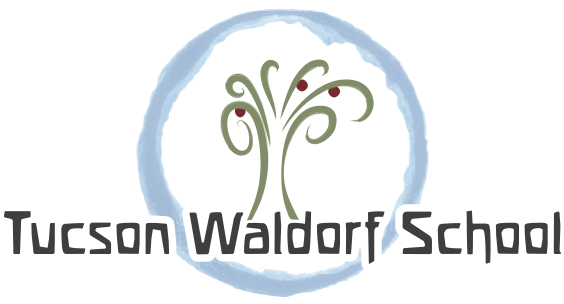In the fourth grade year, students begin to face the complexities of human emotions and motivations, keenly aware of the polarity of self and other. Fourth graders meet the world with growing capacities of thinking and feeling, and they long for experiences of the self that extends beyond family. Employing Norse mythology and other world folktales, the teacher presents stories that focus on strength of character, courage, self-sacrifice, and perseverance while revealing hidden motives, a character’s fallibility and the challenges of working at cross purposes with others.
In math, students are introduced to fractions, a mathematical mirroring of the fracturing experienced in the social realm, and the science curriculum becomes more formal with the study of animals, particularly as they contrast with the human. Students begin to develop a sense of place through the study of local geography and history, the curriculum meeting the need of students to move beyond themselves while cultivating a warm human connection with the environment.
Main Learning Objectives
Language Arts
Spelling, punctuation, capitalization, sentence structure and vocabulary development are emphasized in independent writing. Students practice simple research skills, and the study of grammar begins with an examination of the parts of speech and verb tenses. They explore letter writing as a means of human communication. Recitation and dramatic presentation enrich the Main Lesson study. The class presents a dramatic production of a Norse Myth.
Mathematics
The ongoing study and practice of arithmetic continue, and students practice the manipulation of fractions in all four processes. Students begin working arithmetically with fractions.
Science
The study of animals in grade fourth not only explores animal environments and behaviors but also leads students to a greater understanding of what it means to be human. A first research report on an animal is produced.
Geography
There is an exploration of the local environment, moving outward from the home and school into the city, county, and state. Map drawing begins with their room at home and culminates in creating a state map. Mapping helps students define the dimensions and proportions of things familiar and then allows them to carry gained understandings to places unknown through the reading of maps.
History
The fourth-grade curriculum inaugurates historical study with local and regional history, helping confirm in the students a strong sense of place and giving them tools that will help them to read maps of unknown places in years to come.
Art
As in the early grades, art permeates all lessons of the year. Children continue to develop their skills with pencil, crayon, and paint. Modeling continues, and the work in form drawing continues, becoming more intricate as the students create dimension with line, recreating designs from the Celtic tradition (Celtic knots).
Specialty Subjects
Foreign Language
Students continue with story and verse to build vocabulary and power of expression in Spanish, and the work begins to include a study of grammar, looking at parts of speech and verb tenses. Spanish develops a dramatic production for presentation at the University of Arizona Language Fair.
Practical Arts
Work with fiber arts continues in this year. Students work cross-stitch embroidery, creating pieces, which they use in hand sewing projects to make a useful item such as a bookmark, pillow or small bag. Lessons in gardening continue in the biodynamic farm, River Road Gardens, on the school campus.
Music
The class teacher leads the children to harmony and the singing of parts as they begin to explore the singing of rounds, continuing as well the classwork with the wooden flute. A specialty teacher introduces the students to stringed instruments, leading to stringed instrument ensembles.
Movement Education
Cooperative games and overall fitness continue to be the focus of the work in movement.
